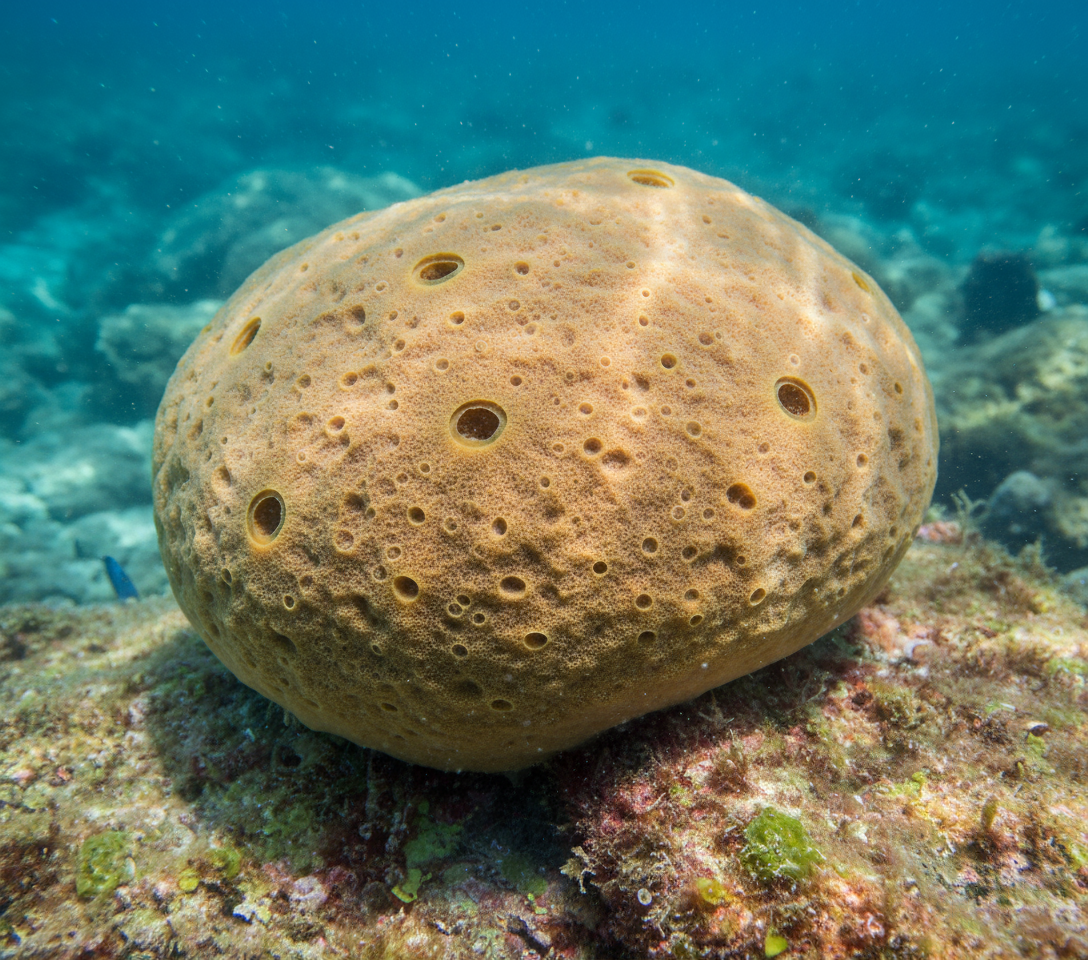Classification of Euspongia
- Phylum: Porifera (Pore-bearing aquatic animals with cellular grade organization)
- Class: Demospongiae (Sponges with skeletons comprised of spongin fibers and siliceous spicules)
- Order: Dictyoceratida (Sponges characterized by a skeleton mainly of spongin without siliceous spicules)
- Family: Spongiidae (Sponges with fibrous skeletons often used for commercial sponges)
- Genus: Hippospongia
Euspongia, commonly known as the bath sponge, is a genus of marine sponges valued for its commercial and ecological importance. These sponges are known for their flexible skeletal frame and porous structure.

Habit and Habitat
Euspongia sponges predominantly inhabit shallow marine waters, attaching themselves to rocky surfaces, corals, or submerged stones. They are common in clear, well-oxygenated coastal waters, frequently found along the Mediterranean coasts and other temperate to tropical marine environments.
Geographical Distribution
Species of Euspongia have been recorded primarily in the Mediterranean Sea, western Atlantic, and along the coasts of Europe and the Caribbean. They generally inhabit depths from 1 meter to about 100 meters, favoring hard substrates for attachment.
General Characteristics
- Commonly called as bath sponge attached to rocky substratum.
- It attains a large and massive size with globular or cup-shaped body with dark black colour.
- The slender spongin fibres form small network.
- Complex type of sponge, in which there is a further increase in the folding of the body wall.
- Surface of the body contains large openings called as oscula, and small opening called as inhalant canals.
- Bath sponge is of household use. It is prepared-by squeezing and bleaching or dyeing the sponge.
- The common bath sponge mainly consists of spongin fibres having the capacity of holding water.
- Commonly used in offices, etc. for wetting postal tickets and counting currency notes or papers, etc.
- Euspongia typically has a globular or lobed body with a soft yet firm texture.
- The surface is covered with small raised projections called conules, which give it a rough texture.
- Numerous small pores (ostia) and larger openings (oscula) facilitate water flow.
- The skeleton consists mainly of spongin fibers forming a dense but flexible meshwork.
- Colors vary from pale cream to light brown or yellowish.
- The sponge reproduces sexually and asexually, with seasonal reproductive patterns.

Special Features
Euspongia’s main feature is its fibrous spongin skeleton, which makes it valuable as a natural bath sponge. The flexible mesh allows efficient filtration while providing durability. Some species have been harvested extensively leading to conservation concerns and the development of sponge farming techniques.
Identification
Identification is based on the globular, lobed form and the rough, conulose surface. The soft but resilient texture and the pattern of oscula and ostia are characteristic. Microscopic analysis shows the presence of spongin fibers as the main supportive framework without siliceous spicules.
References:
- https://en.wikipedia.org/wiki/Spongia_officinalis
- https://www.biologydiscussion.com/structures/structure-of-euspongia-with-diagram-zoology/60467
- https://www.aakash.ac.in/important-concepts/biology/phylum-porifera
- https://www.biologydiscussion.com/invertebrate-zoology/sponges/sponges-characters-and-classification-animal-kingdom/69810
- https://www.vedantu.com/biology/phylum-porifera
- https://www.vedantu.com/question-answer/body-of-euspongia-is-mainly-composed-of-a-class-12-biology-cbse-5f3f675862176b65adca957d
- http://www.marinespecies.org/porifera/porifera.php?p=taxdetails&id=165220
- https://homework.study.com/explanation/what-are-the-class-body-type-types-of-spicules-present-shape-and-habitat-of-euspongia.html
- https://www.youtube.com/watch?v=d-PQ2Ekl-Js
- https://allen.in/neet/biology/phylum-porifera
